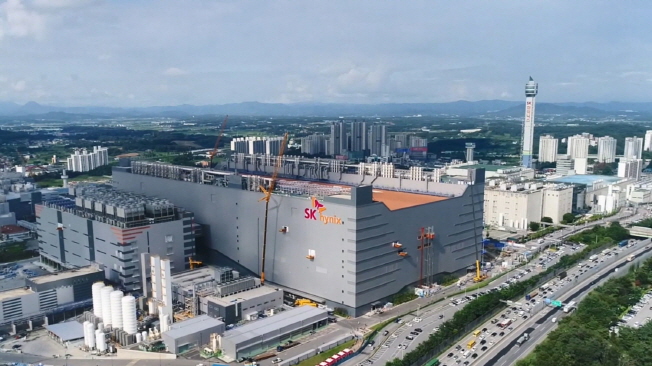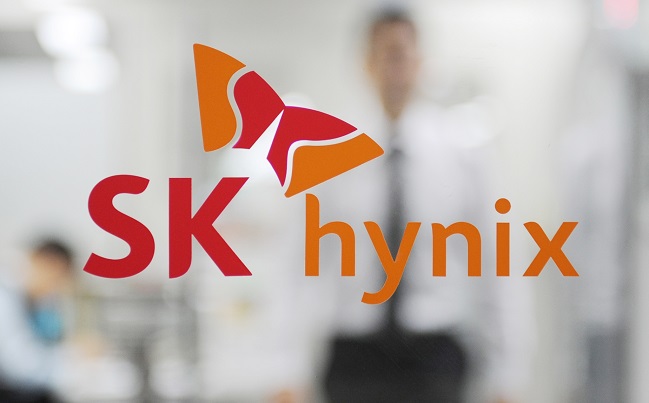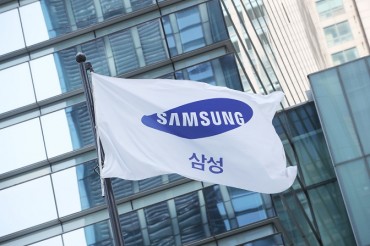SEOUL, Oct. 23 (Korea Bizwire) — SK hynix Inc.’s acquisition of Intel Corp.’s NAND memory business will bring positive results to the company, analysts here said Friday, as it can beef up profitability and technological prowess in the sector.
South Korea’s No. 2 chipmaker on Tuesday announced a 10.3 trillion-won (US$9 billion) deal to buy Intel’s non-volatile memory unit that includes its solid state drive (SSD) business and a NAND flash chip plant in Dalian, China.
Local analysts said the deal will help SK hynix achieve economies of scale as the company will step up as the world’s second-largest NAND flash chip supplier.
According to market researcher TrendForce, SK hynix and Intel occupied 11.7 percent and 11.5 percent market shares, respectively, in the second quarter of the year, placing the two firms in fourth and sixth places.
But with the deal, SK hynix can surpass Japan’s Kioxia Corp. to become the No. 2 player behind the industry leader, Samsung Electronics Co., which represents nearly one-third of the NAND flash market.
“The deal will cement the company’s status as the No. 2 memory chipmaker considering that it is already the second-largest supplier in the DRAM industry,” said Choi Young-san, an analyst at eBest Investment & Securities.
“The company can better balance its business structure that currently depends on the DRAM sector.”
Analysts said SK hynix will see the most benefits from the enterprise SSD business as the deal will significantly improve its profitability. SSD is a data storage device that mainly uses NAND flash chips.
“SK hynix’s NAND capacity is twice as large as that of Intel’s, but their revenues are nearly the same,” said Hwang Min-sung, an analyst at Samsung Securities.
“This is because SK hynix focuses on low-priced products for the mobile market, while Intel has a strong lineup of high value-added enterprise SSD products.”
According to TrendForce, Intel has captured more than 50 percent of the Chinese enterprise SSD market. Analysts estimate Intel’s enterprise SSD business has an operating margin of over 20 percent.
Intel had a 29.6 percent share in the enterprise SSD market to rank second, while SK hynix had a 7.1 percent share to rank fifth in the second quarter, according to market researcher Omdia. Samsung had a 34.1 percent share to top the market.
Having Intel’s advanced controller and firmware technologies will also boost SK hynix’s presence in the SSD market with a better product mix, analysts said.
The acquisition deal includes SK hynix getting Intel’s NAND SSD-associated intellectual property and R&D workforce.
A controller is a logic chip that manages data input and output, and handles error correction. Firmware is software used for the chip.
“When a NAND flash supplier has controller and firmware technologies, it can sell NAND flash end products as comprehensive solutions,” said Kim Kyung-min, an analyst at Hana Financial Investment.
“Since controllers are logic chips, companies that can design central processing units or application processors have advantages of developing NAND flash controller technologies.”
Analysts said it is also a positive that SK hynix will forge Intel’s quadruple level cell (QLC) NAND flash architecture solution, which offers higher bit density for cost competitiveness.
Intel uses floating gate technology for its NAND flash production, while SK hynix uses charge trap technology, meaning they have different etching processes when manufacturing chips.
But analysts said that the difference will actually serve as a good opportunity for SK hynix to expand its technology coverage.
“It is likely that Intel’s Chinese factory will keep its floating gate-process, and SK hynix is expected to pursue a two-track strategy,” said Park Sung-soon, an analyst at Cape Investment & Securities.
From an overall memory industry perspective, analysts said the deal helps both the NAND flash and DRAM markets.
“This consolidation means there is less competition in the NAND flash market and that suppliers will have more bargaining power than buyers,” said Kim Sun-woo, an analyst at Meritz Securities.
“It will also help the recovery of the DRAM industry because SK hynix will have a conservative approach in the DRAM investment and that can push up chip prices.”
Probably the only negative side of the acquisition would be its price as SK hynix could feel the burden of preparing funds to complete the deal, analysts said.
Under the deal, SK hynix will first have to pay $7 billion to Intel by late 2021 and give the remaining $2 billion by March 2025.
“The risk in this deal is that the company has to pay a lump sum of money,” said Choi Do-yeon, an analyst at Shinhan Financial Investment.
“Since the turnaround of the NAND flash business appears to be delayed compared to the DRAM business, there are concerns.”
(Yonhap)









